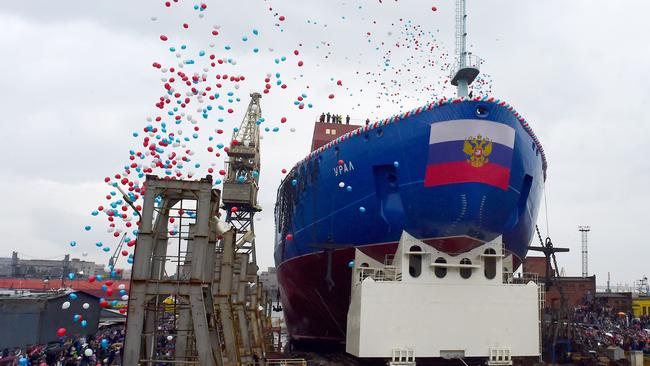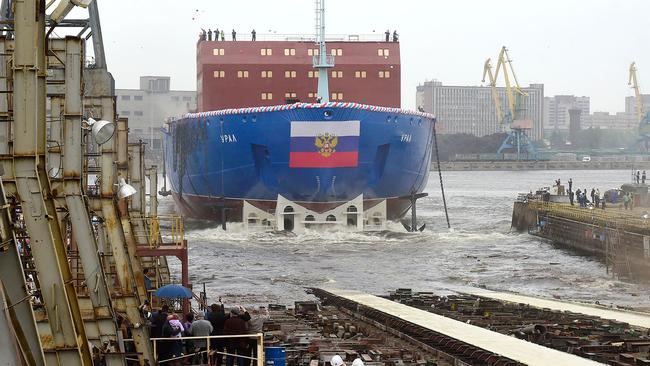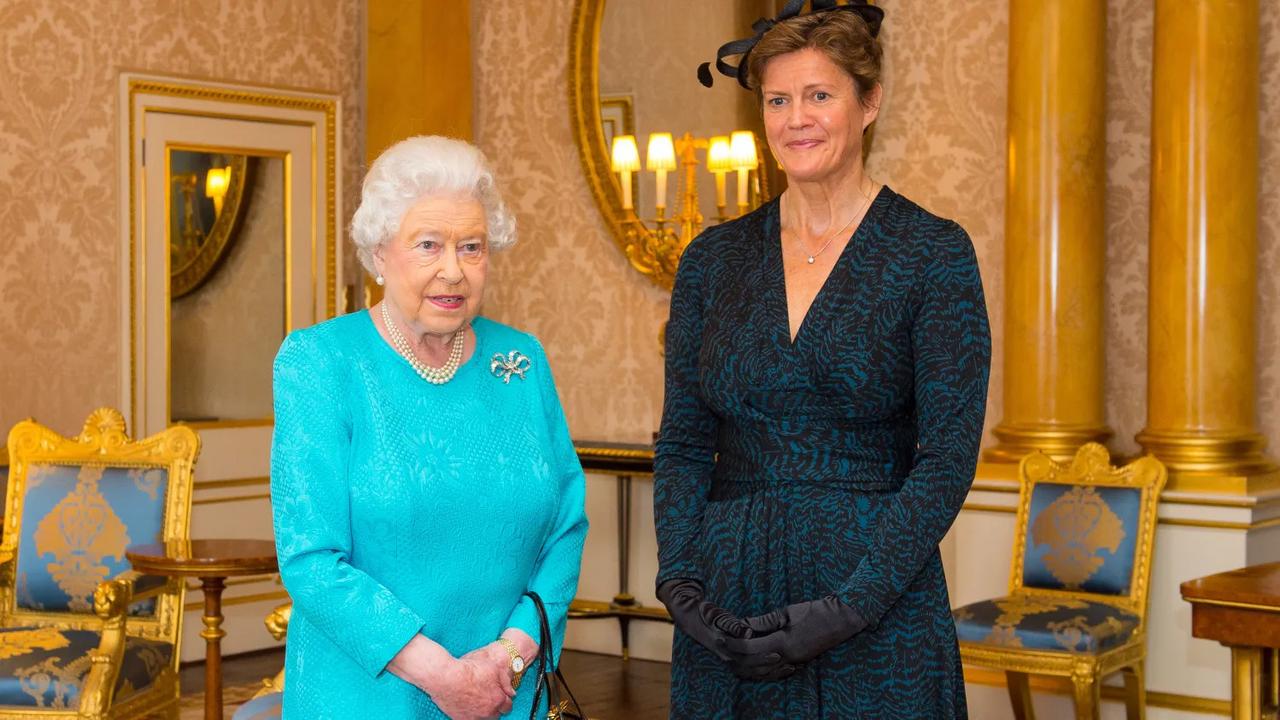nuclear icebreaker fleet to cement power in Arctic
Russia is expanding its fleet of nuclear icebreakers to dominate the sea route between Europe and Asia.

Russia is expanding its fleet of nuclear icebreakers as it seeks to cement its role as an Arctic power, dominating the sea route between Europe and Asia.
The Ural, one of three Russian icebreakers that will be the biggest in the world when they are completed over the next two years, was floated out from a shipyard in St Petersburg at the weekend.
The 560ft ship will enter service in 2022, after the Sibir in 2021 and the Arktika next year.
Equipped with two nuclear reactors that produce a combined power of 350MW, the Ural is capable of smashing through pack ice up to ten feet thick.
Speaking at the Arctic Forum last month, President Putin said that 13 new heavy-duty icebreakers would join Russia’s fleet in the far north by 2035, nine of them nuclear powered. It currently has five active atomic icebreakers. No other country has any.

Russia wants to cash in on the vast reserves of offshore oil and gas in the Arctic and to develop the Northern Sea Route (NSR) along its Arctic coast, which is becoming more viable as polar ice recedes as a result of global warming.
The route is seen as a future alternative to the traditional, longer journeys for carrying goods from the Far East to Europe. The distance between St Petersburg and Vladivostok via the NSR is 8,873 miles, compared with 14,415 miles via the Suez Canal and 18,268 miles around the Cape of Good Hope.
Some cargo boats with strengthened hulls are already able to pass the length of the route in summer but support is still needed from icebreakers at other times of the year.
Commenting on the ceremonial launch of the Ural on Saturday, Alexei Likhachev, director-general of Rosatom, the state atomic energy corporation, said: “The Ural, together with its sisters, is central to our strategic project of opening the NSR to all-year activity. Our goal for 2024 is for more than 80 million metric tonnes of shipments to pass through the NSR.”
Presently, shipping on the route is largely between ports inside Russia. A total of 18 million tonnes of cargo passed along it in 2018, an 80 per cent increase on 2018, with 164 different companies navigating on the route.
Jurisdiction over the route is disputed, with Russia insisting that stretches lie inside its inland waters. Moscow charges for the use of icebreakers along the route.
In March it announced that foreign vessels must give notification of their voyage through the NSR 45 days before starting and take a Russian maritime pilot on board.
The Times



To join the conversation, please log in. Don't have an account? Register
Join the conversation, you are commenting as Logout